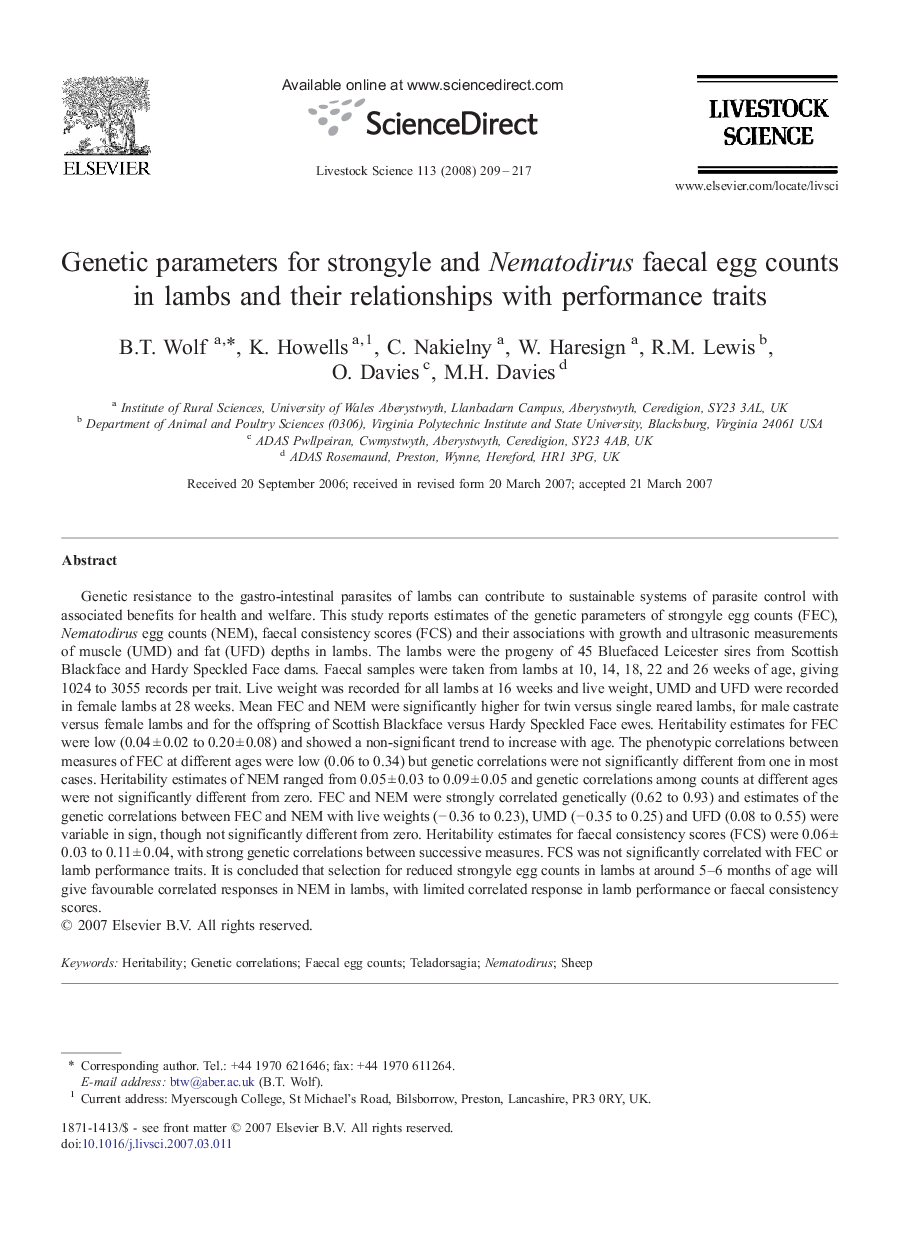| Article ID | Journal | Published Year | Pages | File Type |
|---|---|---|---|---|
| 2448704 | Livestock Science | 2008 | 9 Pages |
Genetic resistance to the gastro-intestinal parasites of lambs can contribute to sustainable systems of parasite control with associated benefits for health and welfare. This study reports estimates of the genetic parameters of strongyle egg counts (FEC), Nematodirus egg counts (NEM), faecal consistency scores (FCS) and their associations with growth and ultrasonic measurements of muscle (UMD) and fat (UFD) depths in lambs. The lambs were the progeny of 45 Bluefaced Leicester sires from Scottish Blackface and Hardy Speckled Face dams. Faecal samples were taken from lambs at 10, 14, 18, 22 and 26 weeks of age, giving 1024 to 3055 records per trait. Live weight was recorded for all lambs at 16 weeks and live weight, UMD and UFD were recorded in female lambs at 28 weeks. Mean FEC and NEM were significantly higher for twin versus single reared lambs, for male castrate versus female lambs and for the offspring of Scottish Blackface versus Hardy Speckled Face ewes. Heritability estimates for FEC were low (0.04 ± 0.02 to 0.20 ± 0.08) and showed a non-significant trend to increase with age. The phenotypic correlations between measures of FEC at different ages were low (0.06 to 0.34) but genetic correlations were not significantly different from one in most cases. Heritability estimates of NEM ranged from 0.05 ± 0.03 to 0.09 ± 0.05 and genetic correlations among counts at different ages were not significantly different from zero. FEC and NEM were strongly correlated genetically (0.62 to 0.93) and estimates of the genetic correlations between FEC and NEM with live weights (− 0.36 to 0.23), UMD (− 0.35 to 0.25) and UFD (0.08 to 0.55) were variable in sign, though not significantly different from zero. Heritability estimates for faecal consistency scores (FCS) were 0.06 ±0.03 to 0.11 ± 0.04, with strong genetic correlations between successive measures. FCS was not significantly correlated with FEC or lamb performance traits. It is concluded that selection for reduced strongyle egg counts in lambs at around 5–6 months of age will give favourable correlated responses in NEM in lambs, with limited correlated response in lamb performance or faecal consistency scores.
